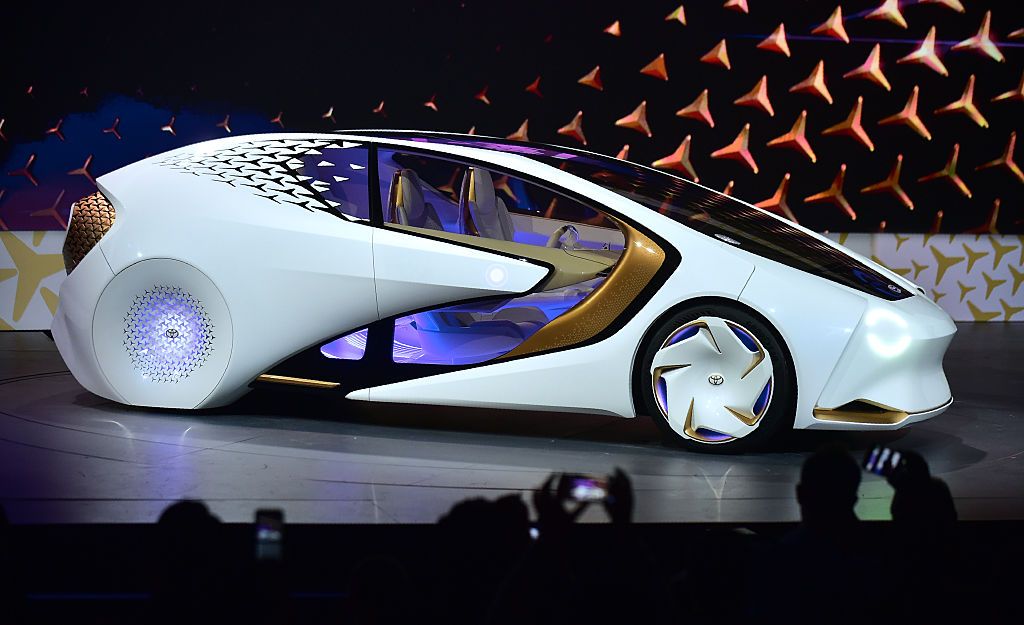During the late 1930s and early 1940s American car stylists tended to assume that future automobile designs would emphasize streamlining. One aspect of streamlining as it was then understood was that it required the "fastback" style, where the roofline curved downward to the level of the rear bumper.
Chrysler Corporation and Ford Motor Company 1940 models featured fastback designs on sedans. General Motors introduced especially sleek fastback bodies for 1941, but hedged its bet by retaining some mild bustle-back designs as well.
But by the time new post-World War 2 designs were planned, fastback styling was falling out of favor. One likely reason was because bustle-back designs offered more trunk space, making them more practical.
Nearly all redesigned 1949 Chrysler Corporation cars had rectangular, bustle-back styling. But there were two exceptions: entry-level Plymouth and Dodge 2-door sedans were fastbacks.
The Plymouth fastback is featured below. All the photos are of cars listed for sale.
This is a 1949 Plymouth Special DeLuxe 4-Door Sedan. Most Plymouth sedans and coupes looked something like this.
Her is a 1949 Plymouth DeLuxe P-17 fastback.
1950 Plymouths were given a simplified grille, but otherwise little-changed.
One small change at the rear was different tail lights.
P-17 Plymouths had a 111-inch wheelbase, whereas other Plymouth sedans had wheelbases of 117 and 118.5 inches: this resulted in a stubbier look. For what it's worth, this Plymouth did look sleeker than their 1940-48 fastbacks did.
Here is a 1949 Chevrolet Fleetline 2-door sedan. It is far more stylish than the Plymouths shown above. However, General Motors phased out fastback designs such as this after the 1952 model year due to slow sales.
During the late 1930s and early 1940s American car stylists tended to assume that future automobile designs would emphasize streamlining. One aspect of streamlining as it was then understood was that it required the "fastback" style, where the roofline curved downward to the level of the rear bumper.
Chrysler Corporation and Ford Motor Company 1940 models featured fastback designs on sedans. General Motors introduced especially sleek fastback bodies for 1941, but hedged its bet by retaining some mild bustle-back designs as well.
But by the time new post-World War 2 designs were planned, fastback styling was falling out of favor. One likely reason was because bustle-back designs offered more trunk space, making them more practical.
Nearly all redesigned 1949 Chrysler Corporation cars had rectangular, bustle-back styling. But there were two exceptions: entry-level Plymouth and Dodge 2-door sedans were fastbacks.
The Plymouth fastback is featured below. All the photos are of cars listed for sale.
This is a 1949 Plymouth Special DeLuxe 4-Door Sedan. Most Plymouth sedans and coupes looked something like this.
Her is a 1949 Plymouth DeLuxe P-17 fastback.
1950 Plymouths were given a simplified grille, but otherwise little-changed.
One small change at the rear was different tail lights.
P-17 Plymouths had a 111-inch wheelbase, whereas other Plymouth sedans had wheelbases of 117 and 118.5 inches: this resulted in a stubbier look. For what it's worth, this Plymouth did look sleeker than their 1940-48 fastbacks did.
Here is a 1949 Chevrolet Fleetline 2-door sedan. It is far more stylish than the Plymouths shown above. However, General Motors phased out fastback designs such as this after the 1952 model year due to slow sales.


















EmoticonEmoticon